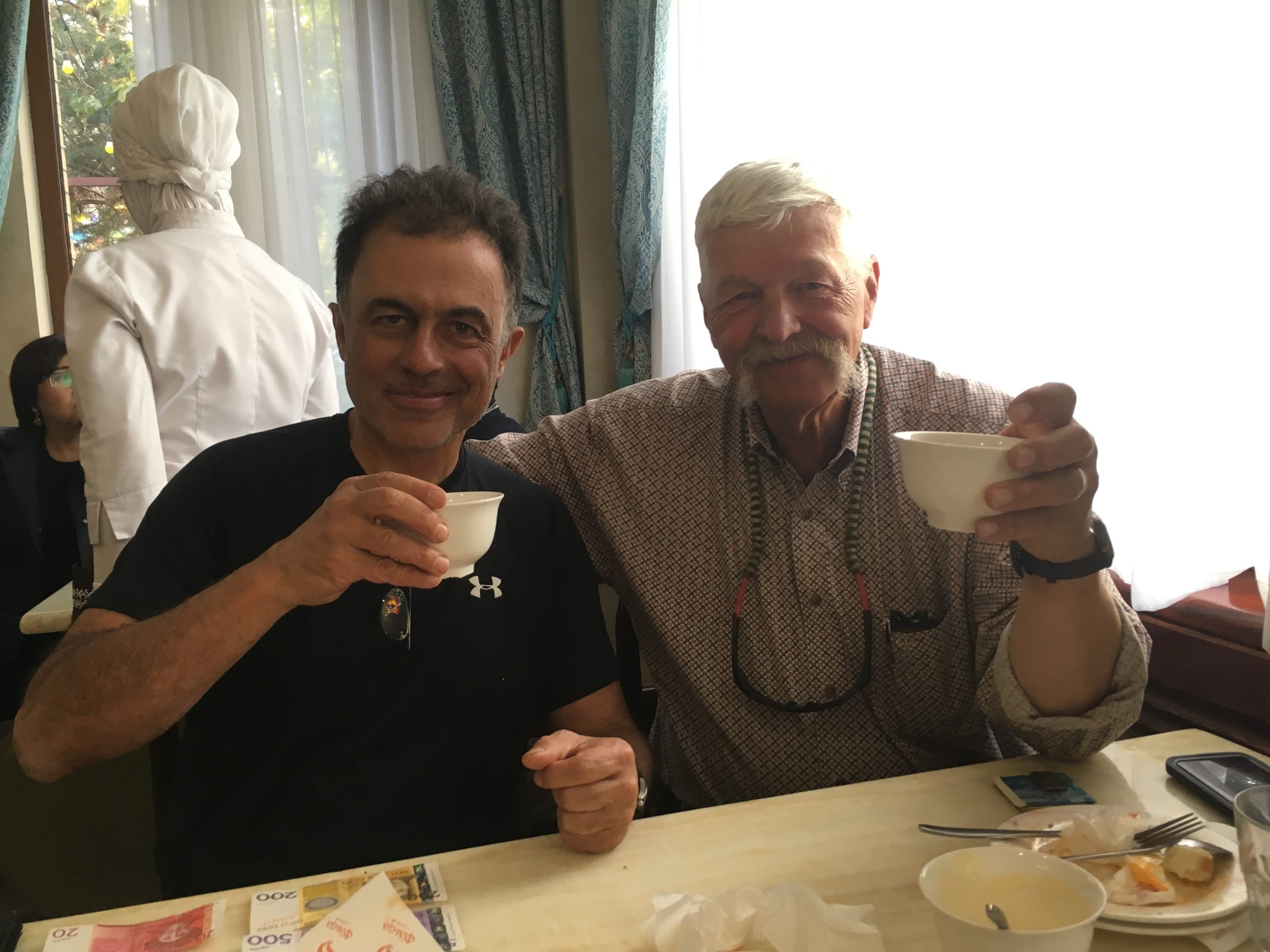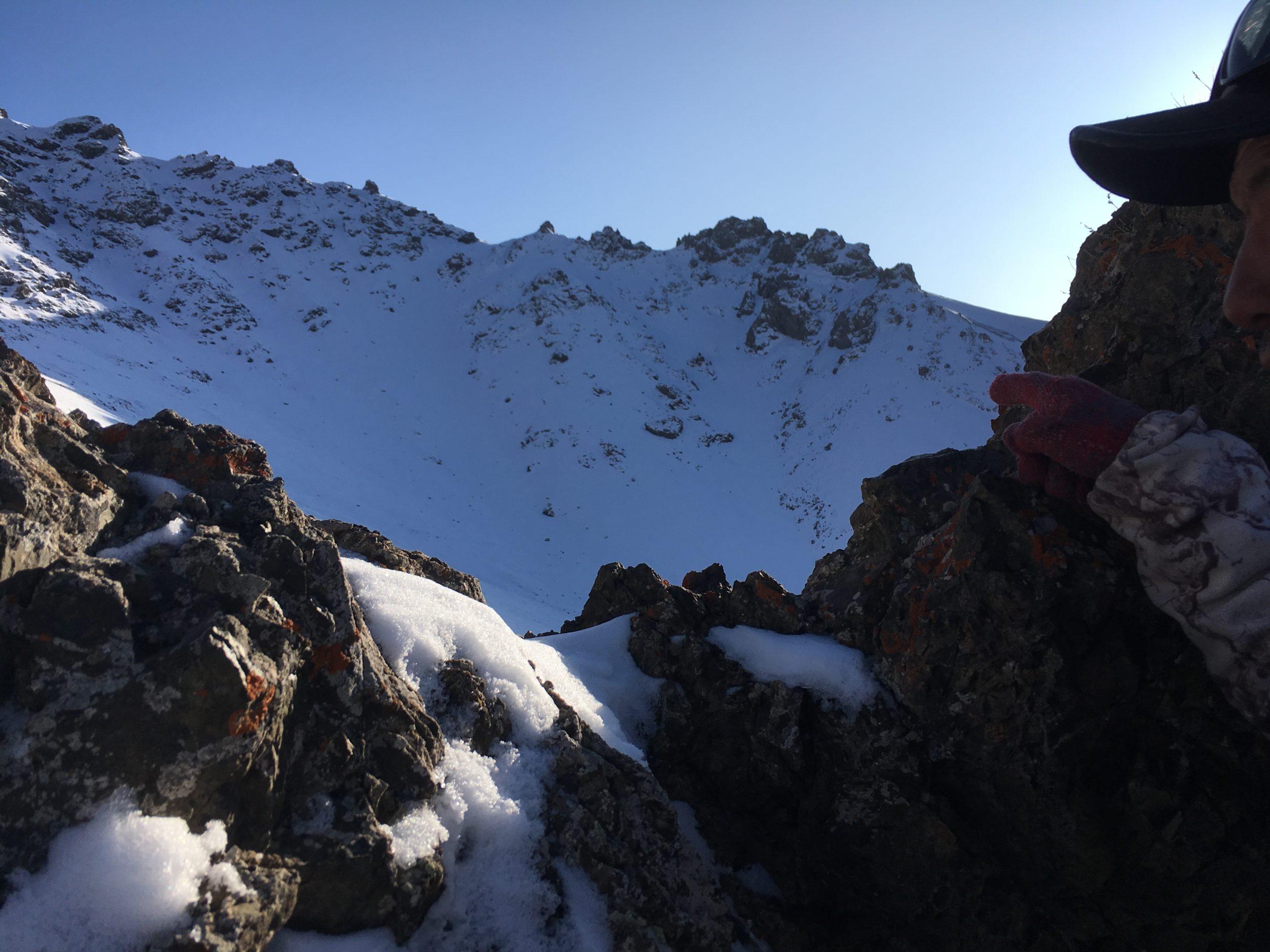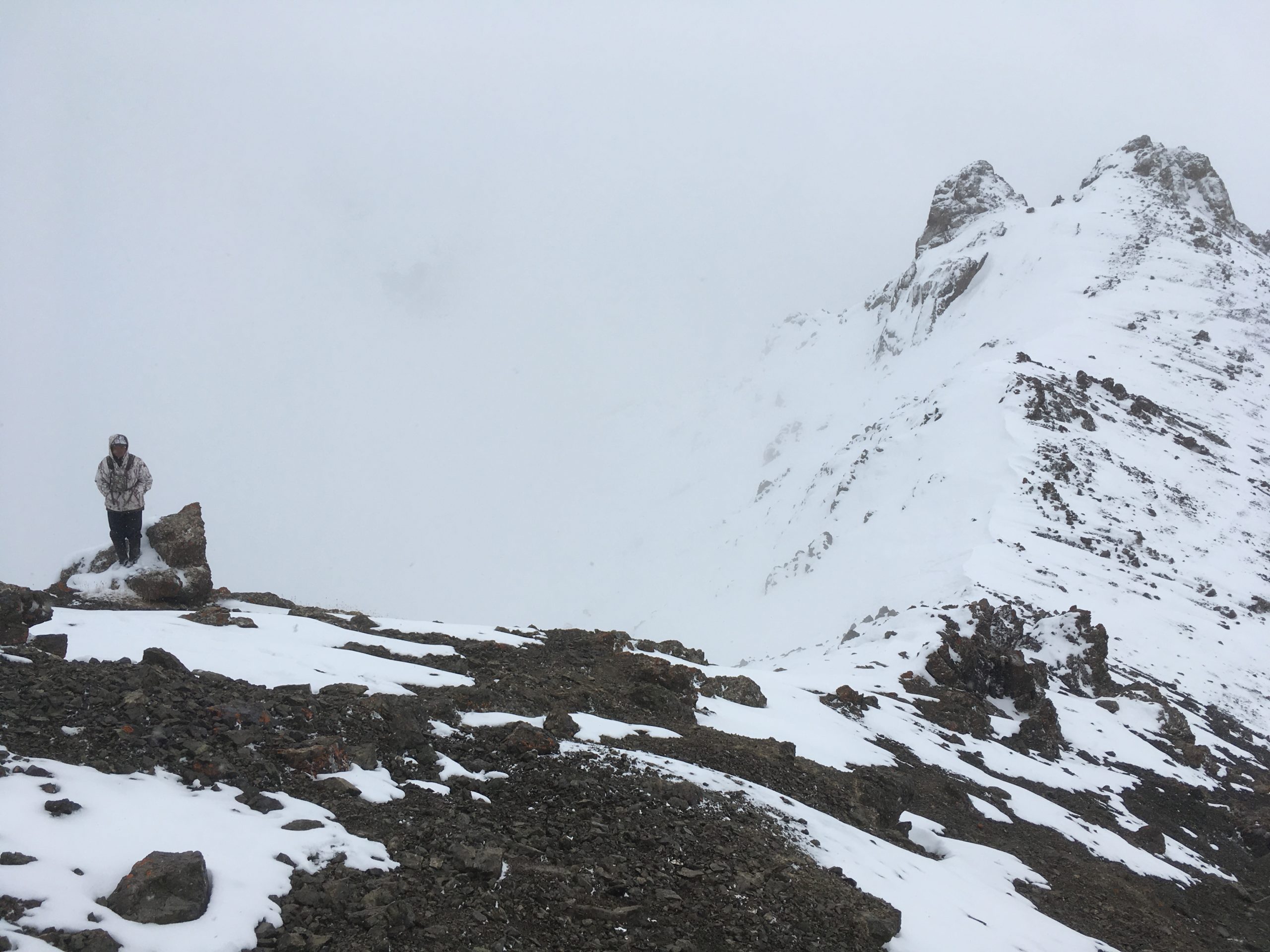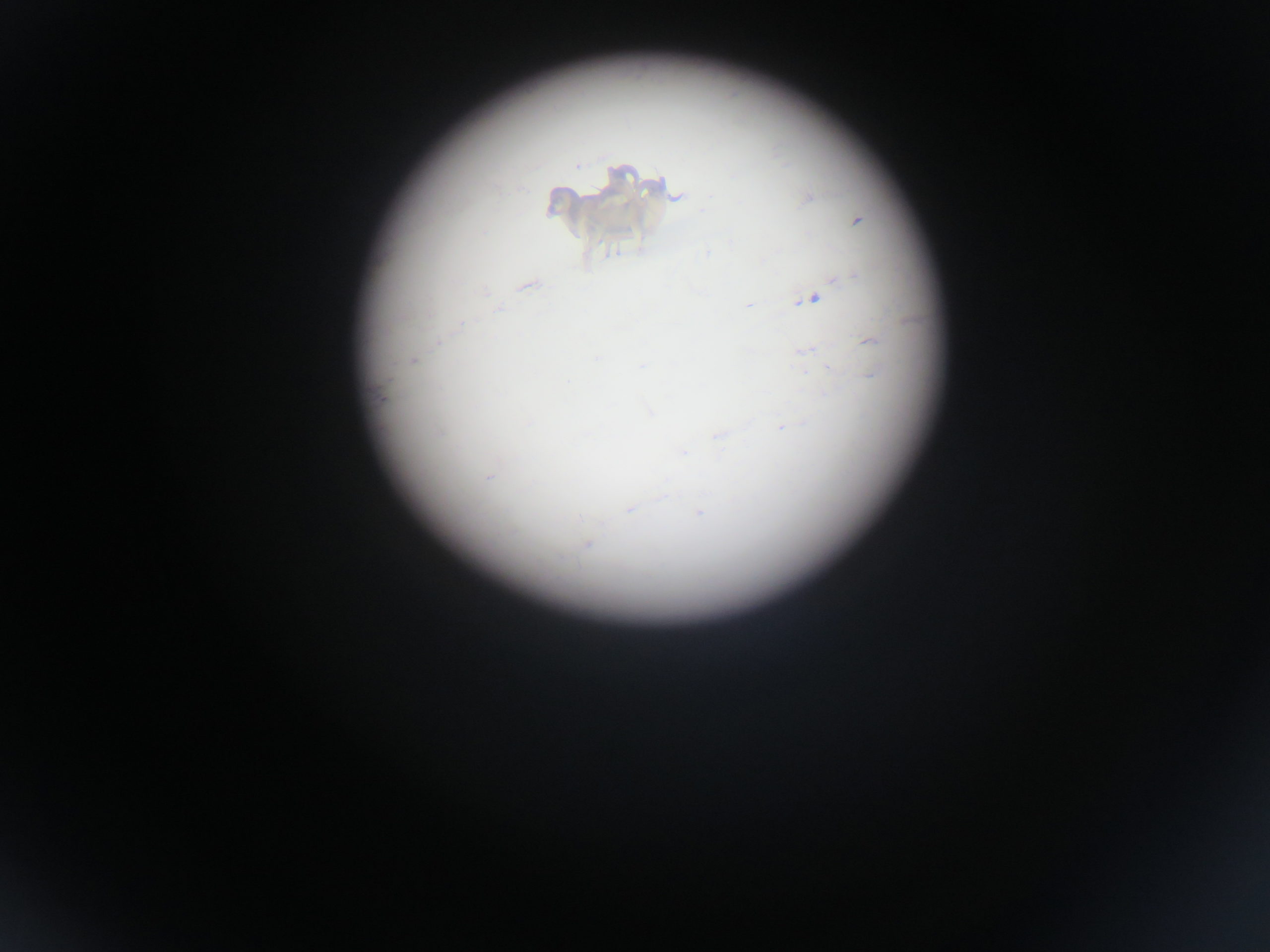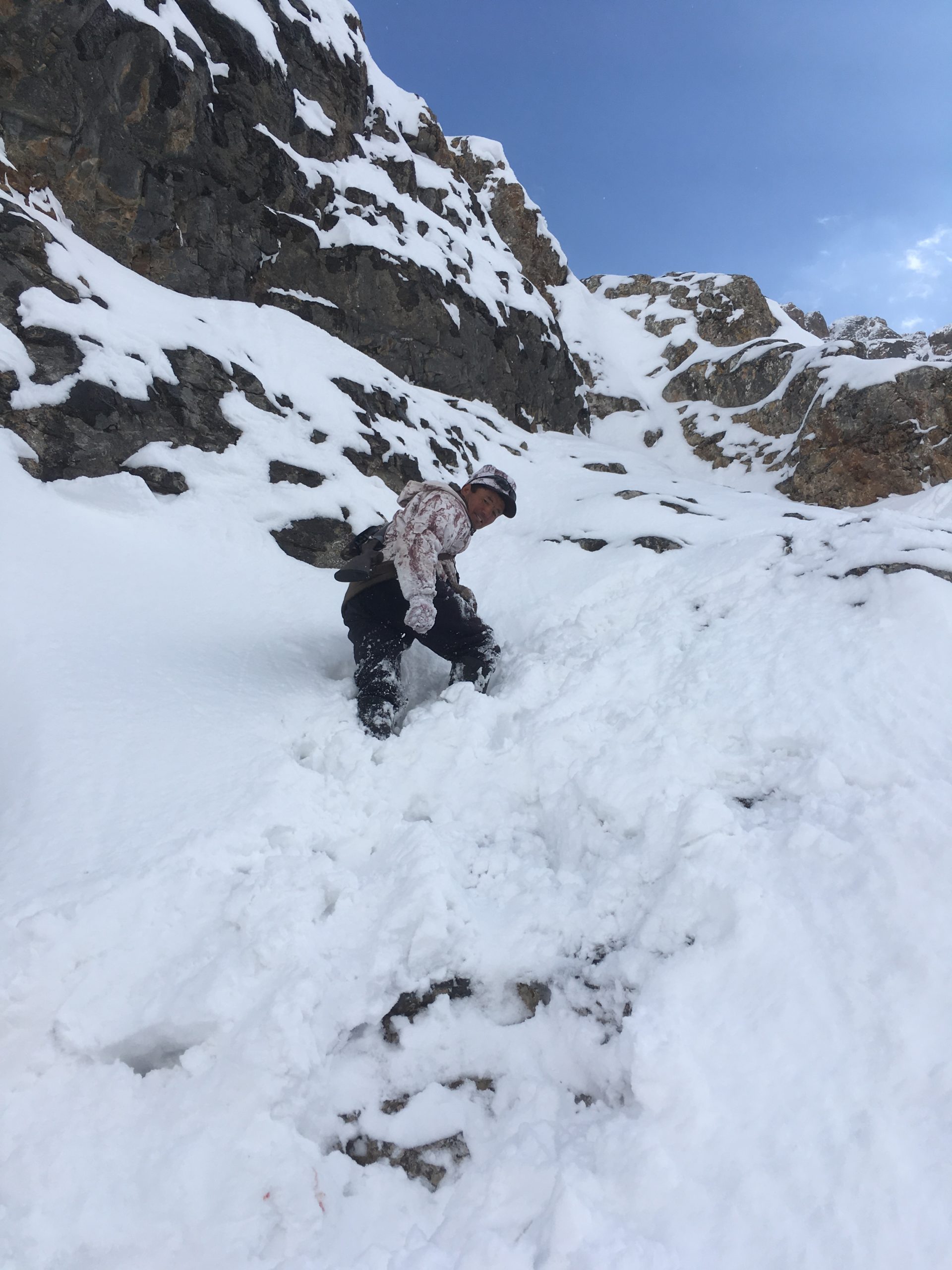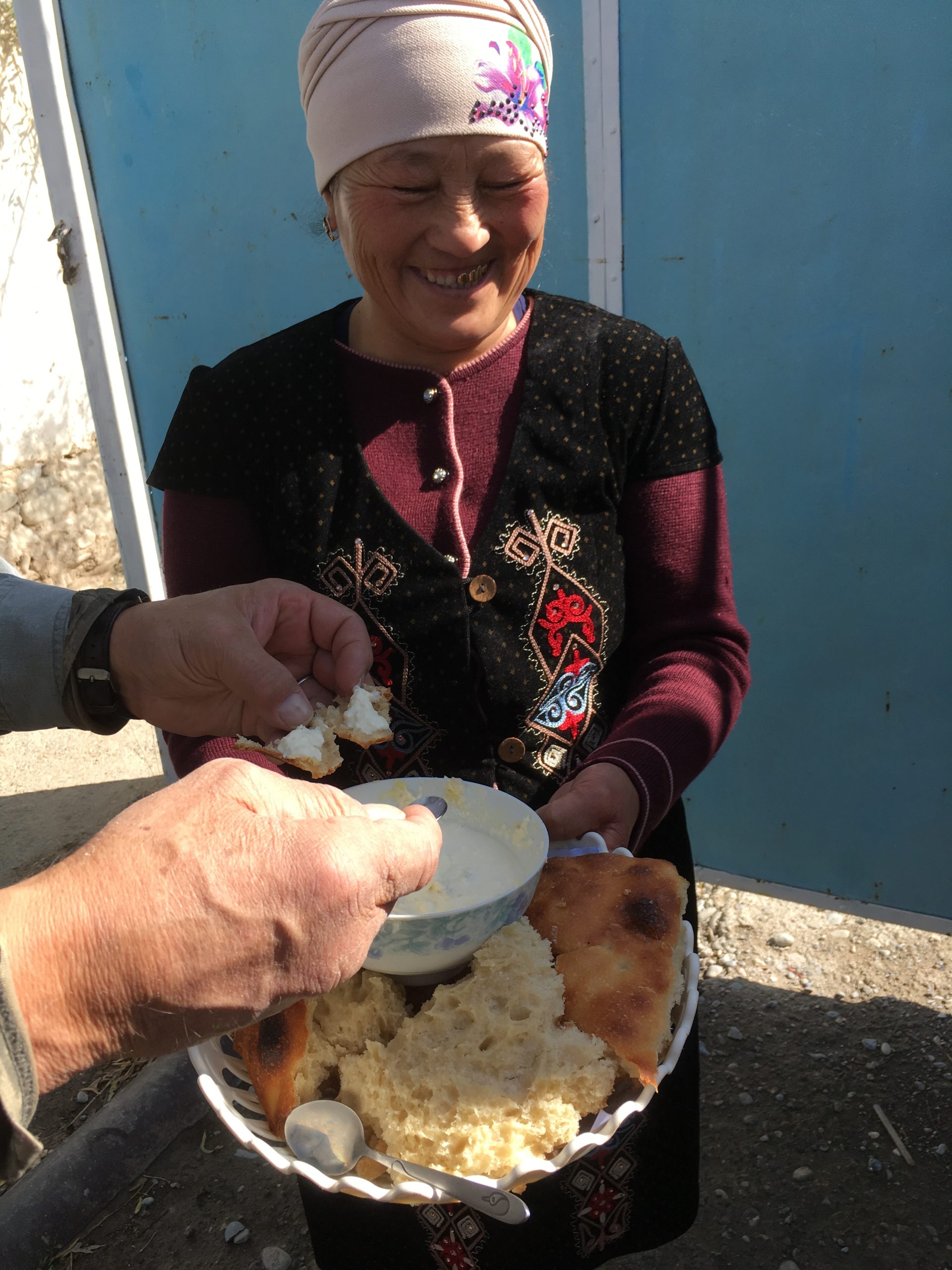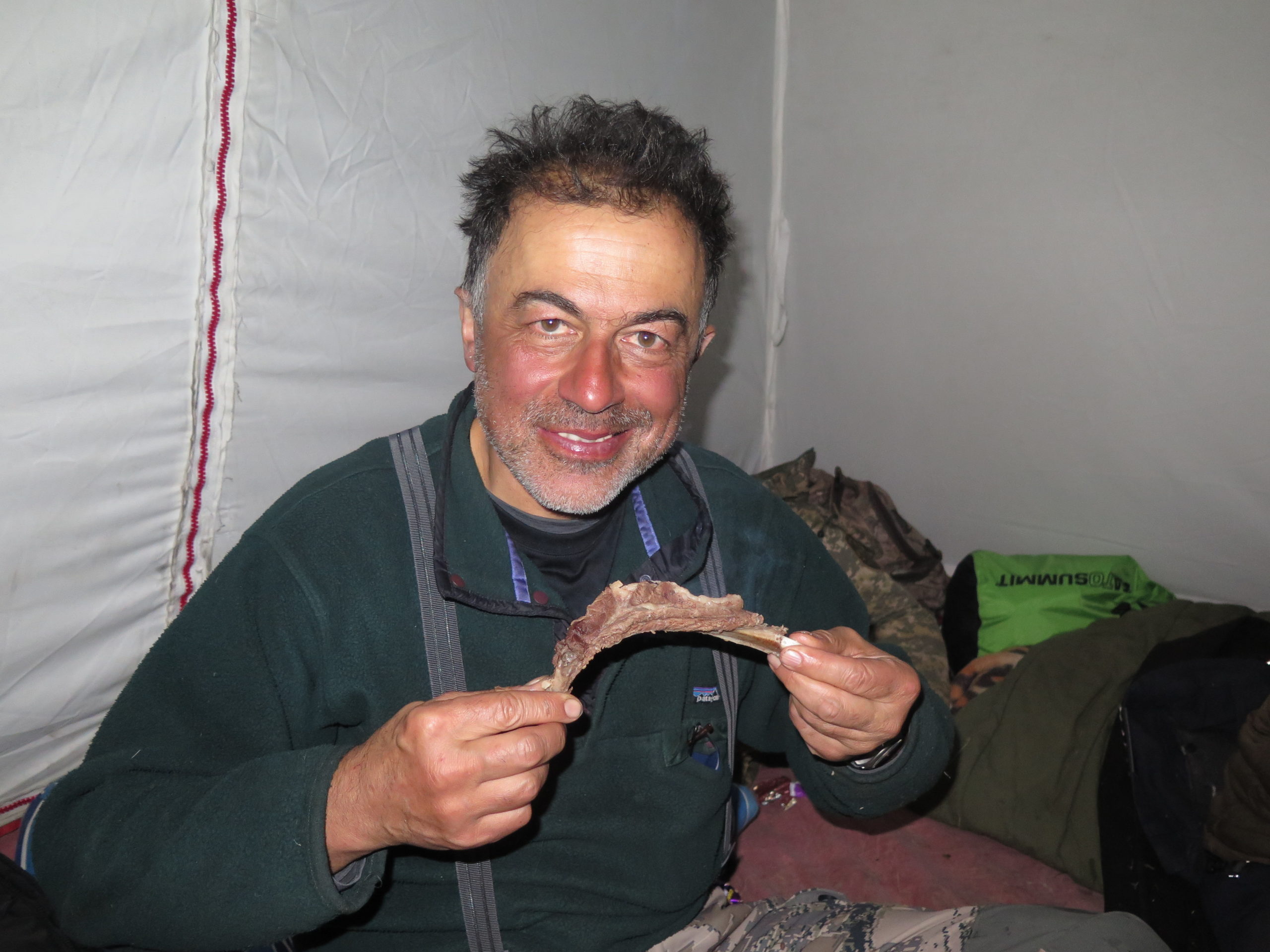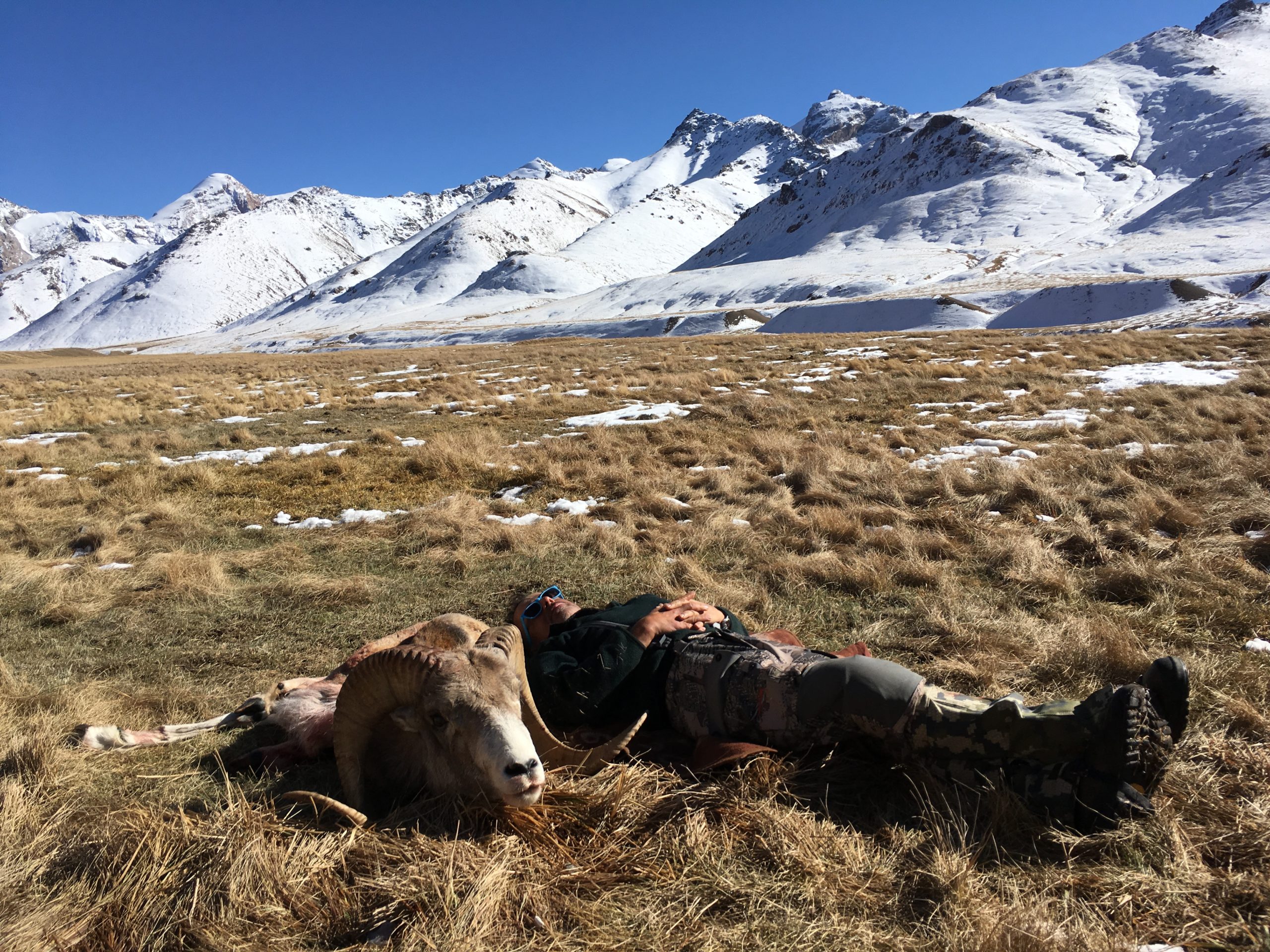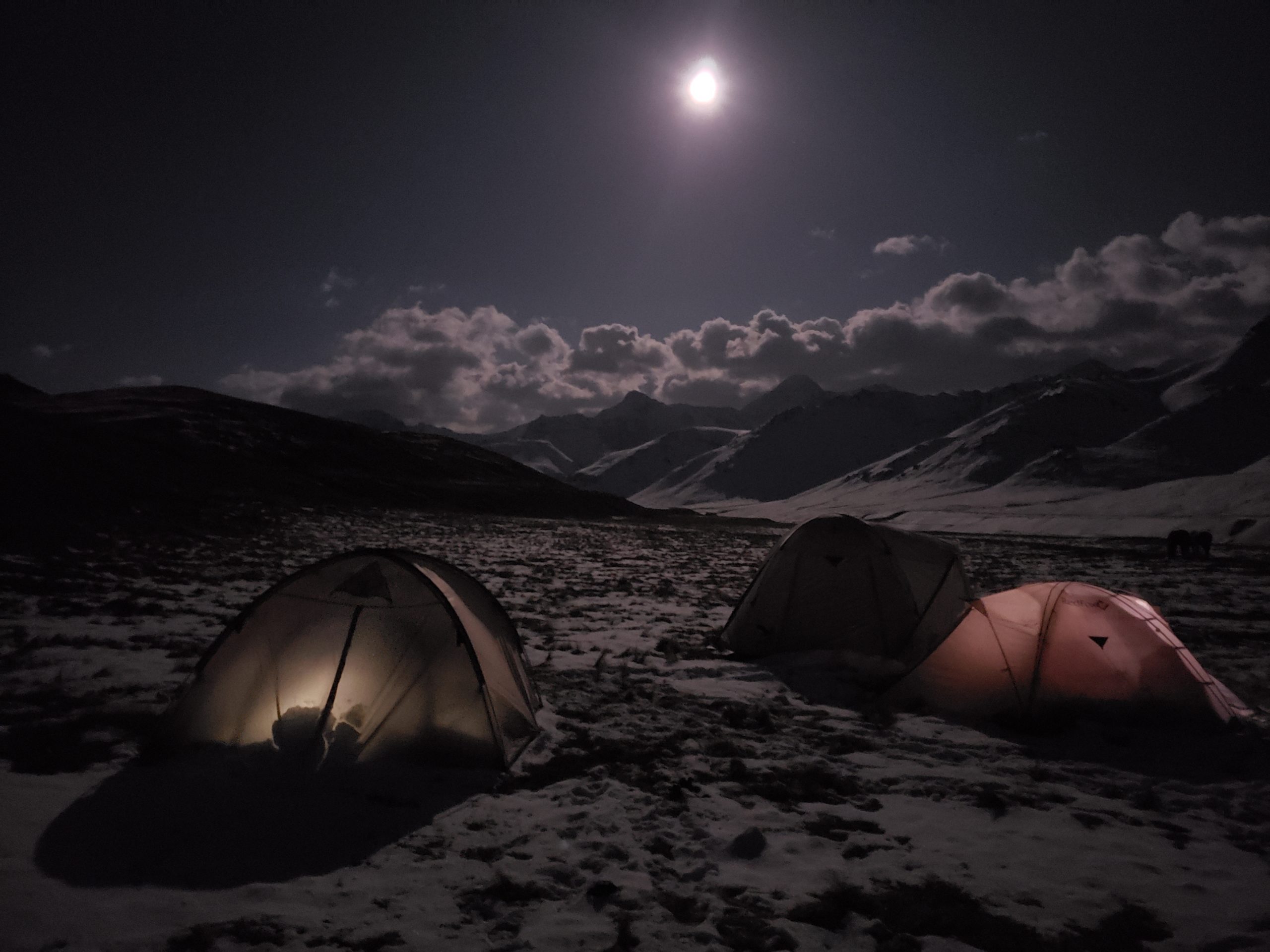The year was 1973. At the age of 12, I accompanied my late dad and uncle to the newly opened wildlife museum in Tehran to see the mountain sheep collection. Amongst the many mounts of Transcaspian Urials, Bezoar Ibex, and other native species, there were two large-bodied rams with extraordinarily massive heads that resembled mules. I was shocked to see such diversity in horn size and my dad told me these were the Argali rams of Mongolia and Tajikistan. My fascination with these Uber sheep began at that moment but in those days, the communist iron curtain was rock solid and remained so into my working years. With my modest engineering income, I dared not even think about affording such a hunt.
When the Soviet bloc fragmented into new independent republics in the early ’90s, the value of trophy hunting and its contribution to the local economies became apparent, leading to easier access and lower prices.
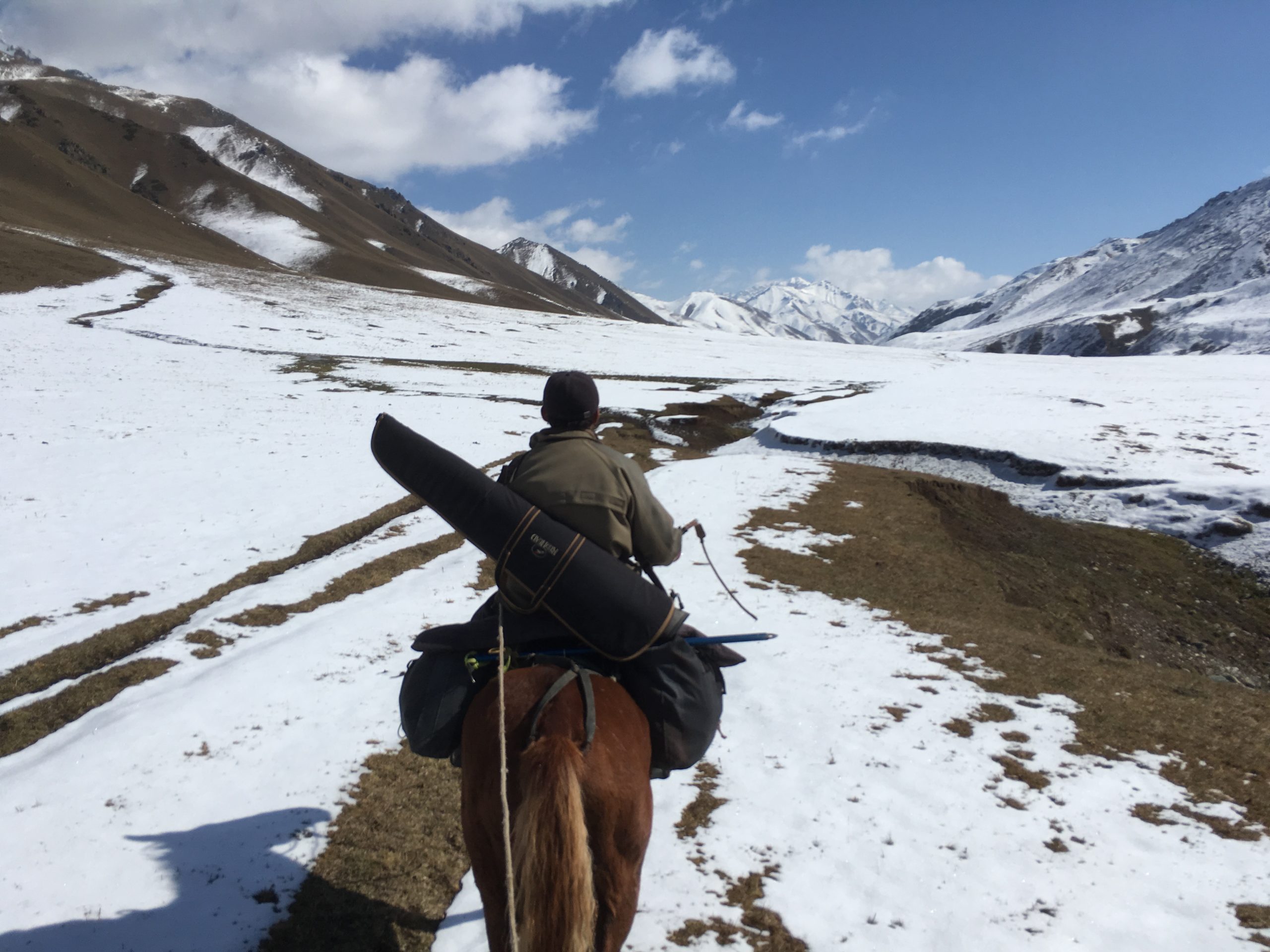
Finally, in October of 2019, my Spanish buddy Valeriano Bellés had come up with a hunt for a Marco Polo Argali that I simply could not refuse and my pal Carl of Northern Alberta decided to tag along for a crack at a mid-Asian Ibex — Gracias amigo. Marco Polo Argalis reside in Tajikistan, Kyrgyzstan, China, and Afghanistan. The latter two being closed to hunting. Tajikistan rams have the longest horns by far, but most hunts take place in undulating terrain which makes it possible to get closer to these giant sheep with less effort. Kyrgyzstan, however, has a different hunting tradition involving horses and steep unforgiving climbs on foot. It was this — one of the toughest sheep hunts on the planet — that drew me in.
As most savvy Asia-bound hunters do, we chose to travel with Turkish Airlines whose agents are not only familiar with transporting hunters and their trophies, they welcome them. The three-leg transatlantic flight to Bishkek was a slog but early on October 8th, we met our outfitter Jakyp and his English-speaking son Mansur on the tarmac. The pre-arranged VIP inspection took a mere 45 minutes and we were soon sitting comfortably in the diesel minivan, destined for Naryn.
The 8-hour drive through an unspoiled landscape with barren mountains and the occasional village reminded me of Iran where I was born almost 60 years ago. I had not been back since the 1979 political turmoil, so my childhood memories were re-ignited. It was as though someone had turned the clock back 100 years. Livestock wandered unfenced, oxen pulled plows and a simple life prevailed.
Naryn was a tiny charming town of 4,000, so it came as a surprise that it had a surface electric rail car system. Mansur insisted that we spend the night there to get acclimatized and we did. The day’s highlight was the music, dancing, drinking of a raucous Kyrgyz wedding in our hotel’s restaurant. We toured town buying cigarettes for our guides even as we began our altitude acclimation for what we would face later.
The next morning, the four of us squeezed into an Old Russian UAZ-452 together with two guides and our interpreter for four hours of intermittent pavement to our main camp. I expected to sight in rifles and head to spike camp but was startled to learn spike camp was still a 36 km (23 mile) horseback ride away. Onward! Planes, trains, automobiles, horseback, boot leather! That night, we met our guides and I liked my guide Bakyt from the first time I shook his hand. A slight man of 5’-2” with a deeply lined and dark-tanned face, Bakyt, and his genuine smile was typical of a mountain man. The “rules of engagement” were translated by our camp interpreter and explained to us. This was of paramount importance as neither of the guides spoke English and we had to make sure we conveyed our trophy expectations and fitness levels to them. The next morning, the slow and steady ride to the spike camp was picturesque with a few gnarly sections. I have limited horseback experience and thus, with no shame, asked Bakyt to lead my horse. In a few spots, I even dismounted and walked the sketchiest terrain. En-route, we saw many wolf tracks and a handful of Marco Polo ewes and lambs.
We reached spike camp at an altitude of 3,500 meters (15,000 ft.) around 5 pm in a wide valley bisected by a river and multiple drainages snaking up between imposing peaks on both sides; a picture-perfect spike camp with water, grass for the horses and quick access to sheep range. While the guides unpacked the horses, I used my trusty Bushnell Spacemaster to scan the slopes. Bingo! Five rams about 5 km out- not so unlike hunting bighorns. The attention switched from camp setup to the shooter ram on the hill. I put on my white camo and we guided the horses along the river to keep a low profile. The last 2 km would be on foot. Coming to the last knoll, I realized there was no way to get closer.
The Leica range finder read 705 yards and there was no wind. The moon was up and the air had a magical feeling to it. I looked at my reticle sub tensions and If the rifle scope engineers had done their math correctly, with the power set at maximum (10X), my third Mildot would be a dead ringer. In the meantime, the rams were calm with their heads down and feeding. I laid my Lilja barreled custom 280 down prone and under no rush, with the third mildot on the ram’s shoulder, squeezed the 2 lb. trigger. A puff of snow came off behind and above the big ram and they all started running. Hmmm…. Was my shot that high? The shot picture stayed in my thoughts and I took note of it.
For the next two days, we had bad weather and no real chance on a ram until late afternoon of day 3, in light snowfall, Bakyt jumped off the horse at a drainage entrance and quickly signaled us to dismount. Five Rams were descending a steep slope and we would possibly have a shot. The rams settled down and were feeding 550 yards away with open terrain between us. I laid down prone for the shot with the biggest ram that was facing me. I guesstimated him at 48” around the curve with a curl and half on both sides. He was absolutely stunning! Once again, with my second Mil-dot on his brisket and the magnification set at 10x power, the spitzer was launched towards the ram’s chest and my buddy Vale who was watching the shot said: “Your shot hit two feet high over his horns”. The rams fled at once and I was devastated.
Confidence in my equipment (scope’s drop compensation ability) had evaporated quickly. Just like a lab who has lost a running Pheasant, I returned to camp with my tail between my legs! That night I could not sleep, my mind dwelling on how I could get myself out of this mess when the closest shots you are getting in this country is 500 yards. Being upset wasn’t going to solve anything and I hadn’t come halfway around the world and spent thousands of dollars to rant at some foreign rifle scope engineers. I also had only two days left to hunt.
I studied my trajectory, made a drop chart with proper holdovers and on the morning of day five, took a couple of shots which confirmed my 250 yard zero. Later that afternoon, we spotted eight rams bedded on a rocky slope some 5 km away. We rode as high and as close as we could and hiked a steep ridge to get above them. Once we peeked over, they were starting to get up to feed. They were 550 yards away and if they were to feed downhill, a 400 yard shot might be possible. Unfortunately, they climbed up to the next ridge instead. The light was running out quickly, but we climbed parallel to them to see where they were going. We decided not to spook the rams, rather, I should grab the horses and walk down straight to the creek while Bakyt flanked the side slope to see where the rams were headed. Remember, this was all taking place with no language communication and just hand signals and the occasional English word! Halfway down the slope, my vision started going blurred and in despair, I sat down. It had been a long emotional day and being in the 4,300 meters elevation (14,000 ft.), my body was reaching its limits. Thankfully, my vision returned to normal after a half hour and I brought the horses down and sat in the dark. It was after 8 pm that Bakyt, with no headlamp, arrived in the inky mountain darkness. These Kyrgyz guides are the most extraordinary mountain guides on the planet. They are tough, develop eagle eyes, have huge lungs and high red blood cell counts. With minimal survival food and almost no gear, they not only go all day on a sip of water and the occasional cigarette, but they also spot game at astounding distances for which us North Americans require a spotting scope. More on that later!
The smell of fried Ibex meat welcomed us to camp. My pal Carl had connected! I don’t recall ever being so eager for meat. With the hope today’s rams would stay in the basin Bakyt put them to bed in, I sent a prayer and tried to get some sleep.
Day six was ideal with a few inches of fresh snow and peak to peak sunshine. It was the kind of day you wanted to live forever. We grabbed the horses and I noticed that Bakyt asked another one of the guys named Khairat to join us. With his tall frame, cool looks and his horsemanship, he would fit the exact description of a Kyrgyz horseman in a Google search. It wasn’t until later that I realized why he was asked to come along. We rode for approximately two hours and entered last night’s spectacular ravine where Bakyt stopped and found the rams at the end of the basin, some 4 km (2.8 miles) away feeding on a snowy avalanche slope. He spoke a mysterious plan to Khairat that would only become clear to me later.
Khairat was to ride ahead of us and climb to the left, blocking the easier escape route that the rams would likely choose. Bakyt and I remained out of sight riding the valley bottom with the wind in our favor and at two kilometers (1.2 miles) out we dismounted, ascended a small knoll and peeked over. Four of the rams were trying to escape through the left slopes but one was still feeding next to the avalanche slope. He was not the biggest ram of the bunch but was the one in range. He was still a remarkable animal with the flaring horns of my dreams. I ranged him at 390 yards and prepared for the shot. Based on my drop chart, I was to aim at top of his shoulder to compensate for the bullet drop. The mountain silence was broken when my 280 barked. The ram stiffened. Fifteen seconds later he folded where he stood.
The deed was done; my holy grail of mountain sheep was taken in fair chase and with one shot through the vitals. The guides trotted up the avalanche slope to retrieve the ram and frankly, I was concerned about their safety. They moved him to the snowy slope and as I approached, I was awestruck. He was a mature 8 ½-year-old ram with 42” long symmetrical horns and 15” bases. His body must have weighed 400 lbs., head and shoulders bigger than our 300 lb. Bighorns of the Canadian Rockies. We took a handful of pictures and allowed the calm to descend.
I had the luxury of time to sit prayerfully with this remarkable animal at an altitude as close to heaven as I have ever achieved. My late dad and uncle, now in sheep/Ibex heaven, had clearly influenced my hobbies and love for all things to do with mater natura so it should not have been surprising to find a familiar closeness in this return to my heritage. While the guides were expertly skinning and quartering the ram, I hiked downhill to get the horses and ponder what had just transpired. Gratitude descended and I felt like one of the luckiest men alive. With the ram quarters lashed onto the horses, the cape and substantial horns lashed to mine, we started the 3-hour ride back to spike camp. All the hardship and disappointment that I had endured up to now just disappeared into the thin mountain air. Along the way back to spike camp, we were also blessed to see and follow a rare and very large Asian Brown Bear boar, resembling our own Grizzly bear.
Once at spike camp, the guides sorted the meat and my pounding headache required a nap next to my dream trophy. There are few ills that a mountain siesta cannot cure. The ram’s ribs, feet, and even his tail had been set on a saltwater boil for a scrumptious supper that the guides devoured nonstop. In one and half days, we (but mostly they . . .) consumed the entire Ibex and now the ram’s ribs and neck meat. Clearly, such recharging was important in this climate.
The next morning we packed our gear and started the 37 km (23 mile) jostling ride back to the main camp. Along the way, I continued counting myself extremely lucky to pull this off despite technological failures. There is no feeling quite like riding on a horse with your quarry behind you. This had been an unforgettable experience filled with challenges, the unexpected, compensation, and even hardship that money cannot relive nor purchase.
Upon arrival at the main camp, the horses were near collapse, and I felt bad for them. Let me tell you this; what we have in North America for horses are a bunch of sissy’s. Despite their smaller stature (15 hands to the top of the back and lighter body weight), these tough beasts work day in day out with a bare minimum of coarse mountain forage, just like their nomadic riders. The credit for finding game, figuring complex approaches, wrangling horses, and preparing capes go to the guides –very likely the best mountain hunters in the world.
The return to the capital of Bishkek from base camp was uneventful and we were now looking forward to our return to Canada. However, we had set aside one full day to observe the historic sites of Bishkek. We also asked our interpreter Elmira to accompany us on this cultural leg of our journey which many a foreign hunter passes up in a big rush to get back home. We visited the Borborduk Mosque, the St. Vladimir Orthodox Cathedral, the University, the old KGB building, many statues and in particular that of Kurmanjan Dakta; the female leader of Southern Kyrgyzstan in the late 1800’s. Our last evening ended at one of the most authentic restaurants (Faiza) in Bishkek trying an assortment of local dishes amongst tens of Kyrgyz families. It was a gastronomical experience par excellence.
The next morning as the Boeing 737 left the runway of the Bishkek airport and gained altitude, I gazed once more over those spectacular Tien Shan Mountains that had given me my Marco Polo ram; a true Kyrgyz Belek (Gift in Kyrgyz) and all the memories that went along with it. I felt utterly blessed and am so glad that I got to experience what I believe to be the purest of all mountain hunts on the planet.
Amen


